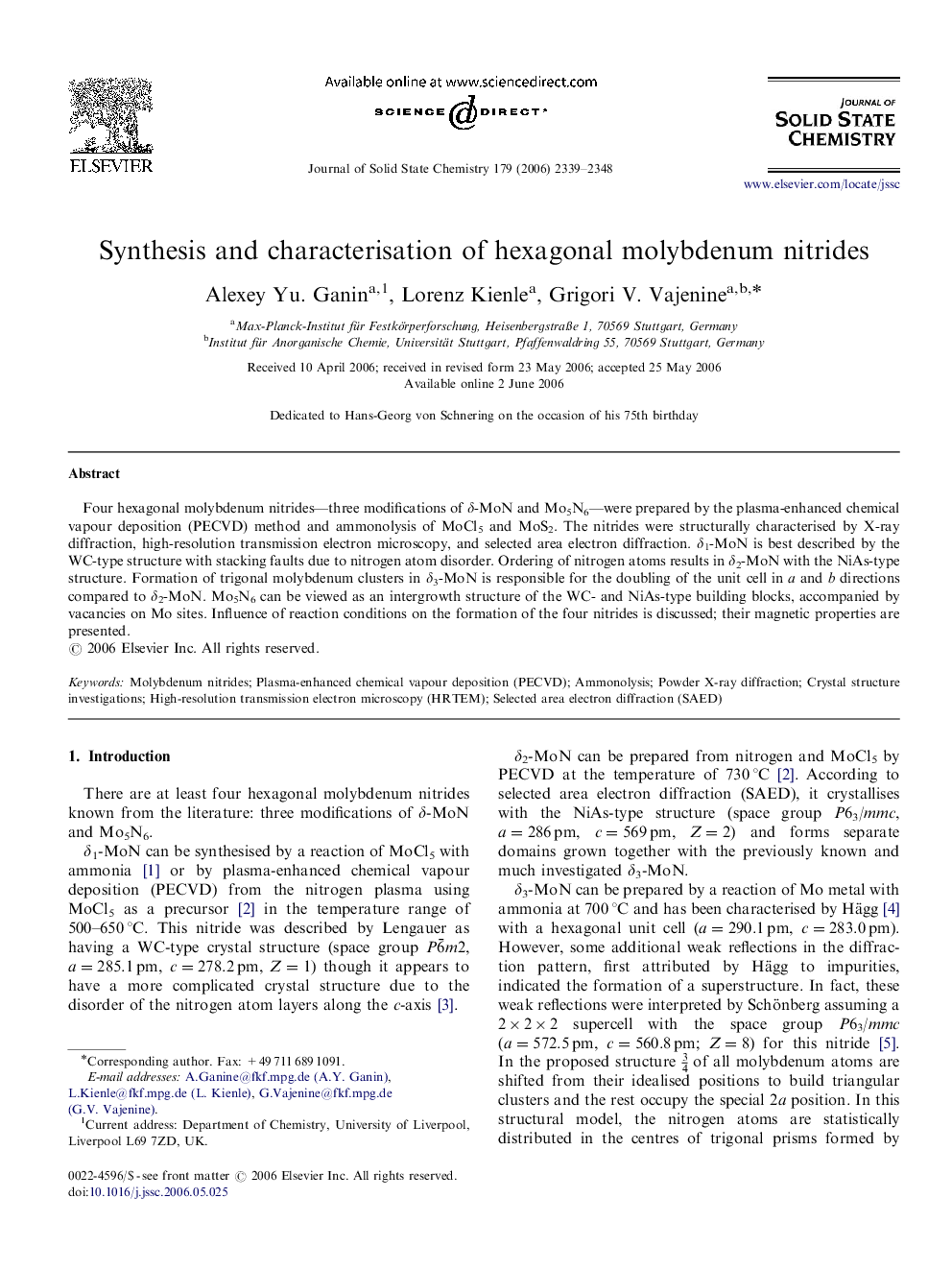| Article ID | Journal | Published Year | Pages | File Type |
|---|---|---|---|---|
| 1333505 | Journal of Solid State Chemistry | 2006 | 10 Pages |
Four hexagonal molybdenum nitrides—three modifications of δ-MoN and Mo5N6—were prepared by the plasma-enhanced chemical vapour deposition (PECVD) method and ammonolysis of MoCl5 and MoS2. The nitrides were structurally characterised by X-ray diffraction, high-resolution transmission electron microscopy, and selected area electron diffraction. δ1-MoN is best described by the WC-type structure with stacking faults due to nitrogen atom disorder. Ordering of nitrogen atoms results in δ2-MoN with the NiAs-type structure. Formation of trigonal molybdenum clusters in δ3-MoN is responsible for the doubling of the unit cell in a and b directions compared to δ2-MoN. Mo5N6 can be viewed as an intergrowth structure of the WC- and NiAs-type building blocks, accompanied by vacancies on Mo sites. Influence of reaction conditions on the formation of the four nitrides is discussed; their magnetic properties are presented.
Graphical abstractHexagonal δ2-MoN with the NiAs-type crystal structure.Figure optionsDownload full-size imageDownload as PowerPoint slide
